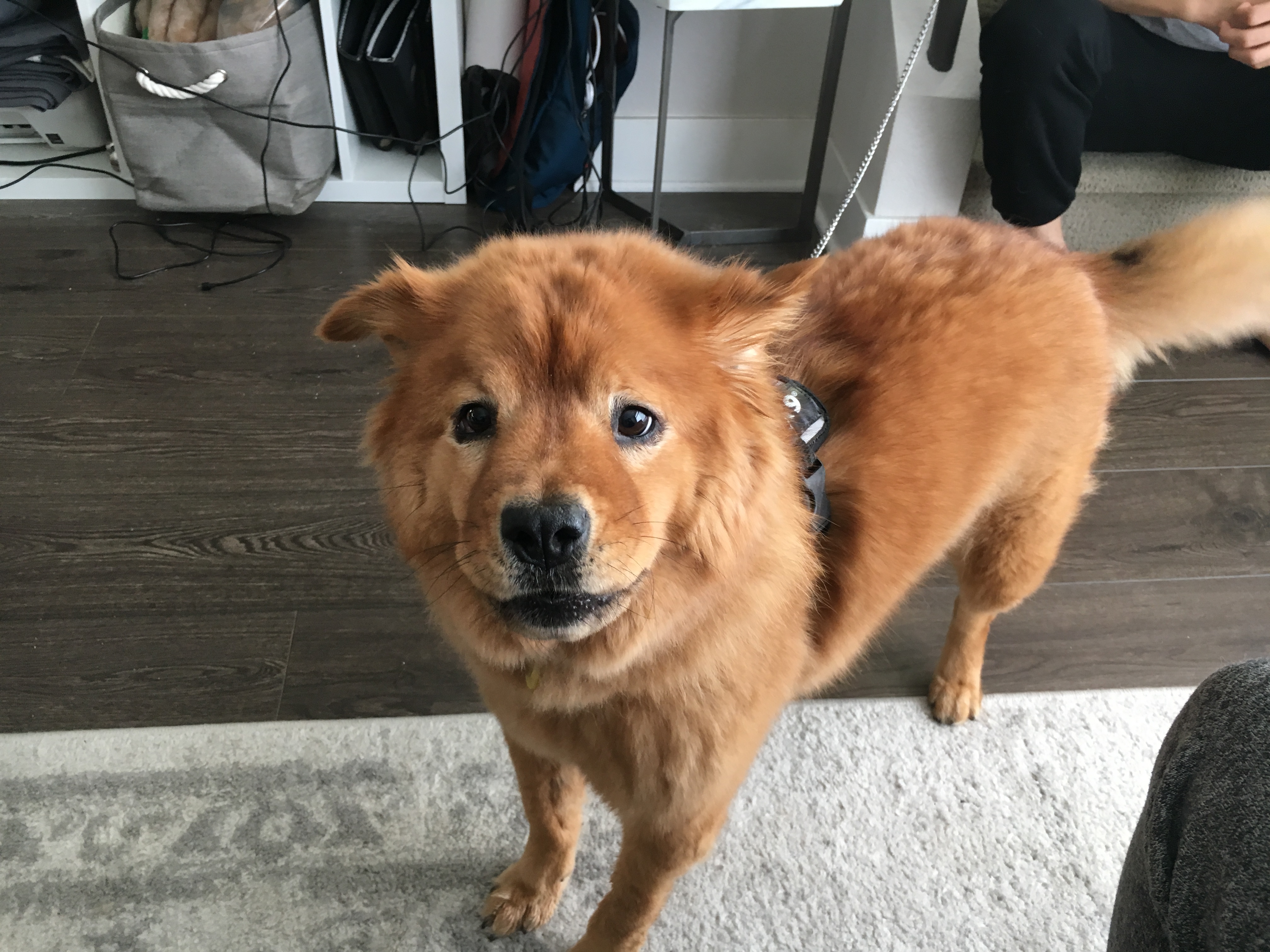Teaching a Fearful Chow Mix to Stop Acting Aggressive Around Strangers
By: David Codr
Published Date: April 2, 2018
For this Los Angeles dog psychology session we worked with Tibbers, a 4 year-old Chow mix who is fearfully reactive around strangers, barking, lunging and nipping to get them to move away.
I had a special guest shadowing me at this session and Tibbers started protesting as soon as we came into the home. Her guardians don’t have many visitors due to Tibber’s aggressive behavior around new people.
I started off with some Behavior Adjustment Training (BAT); providing Tibbers with a mild distractor to help her settle down and get to know me. BAT is one of my favorite approaches when I work with fearful dogs as it helps them learn a new behavior on their own. Instead of micromanaging the dog, we put it in a scenario where we can control the elements and the outcome to ensure the dog succeeds. Within a few moments, Tibbers was walking up to me, giving me some good sniffs and then moving away when she started to get tense.
You can check out this video of a similar BAT session from a dog behavior session I held in Santa Monica last month.
My BAT interaction with Tibbers only took a few moments, but it allowed me to transition into a non threatening persona for most of the rest of the session. As a dog behaviorist, gaining a dog’s trust is key when you want to help them adopt new behaviors.
My special guest had been observing from the far side of the room and he caught the attention of Tibbers. She made several attempts to get him to leave by staring, growling and barking at him. This gave me a great opportunity to observe her body language, identify her wanting signs and see that she was reacting out of fear of the unknown.
I showed the guardians how to make some mini changes to the environment to help Tibbers settle down. Teaching a fearful dog to be calm around new people takes time and a lot of patience as you have to go slow and consistently manage the environment so the dog can stay sub-threshold (feeling calm and not in danger).
One of the techniques I used was to redirect Tibbers attention and teach her to move away from the guest instead of acting aggressive towards them. At first I was reacting when she did, but as I continued, I was able to master the timing and start heading her off and teaching her to move away instead of focus on the guest’s presence.
For the rest of the session, I went over some basic canine communication and social etiquette. The guardians had been inadvertently rewarding many of Tibbers insecurities. These were common mistakes I have seen hundreds of dog guardians make and stopping them is one of the first things I do when rehabilitating a fearfully reactive dog.
We wrapped up this in home dog psychology session by shooting a Roadmap to success video to help the guardians remember all the dog behavior tips and secrets I shared with them in this session. They will need to commit to making these many small changes in how they interact with Tibbers to help her gain confidence and respect for them as leaders.
Categorized in: Dog Psychology


